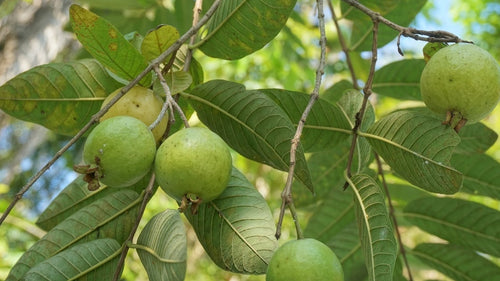Bank of Baroda’s MMCR Urban Forest Initiative: A Green Milestone for 117th Foundation Day
In celebration of its 117th Foundation Day, Bank of Baroda (BoB) embraced sustainability and environmental stewardship with a special tree plantation Read more
Plantation Site Gallery
Project Update 2
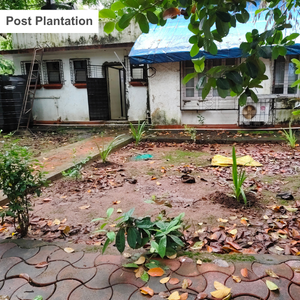
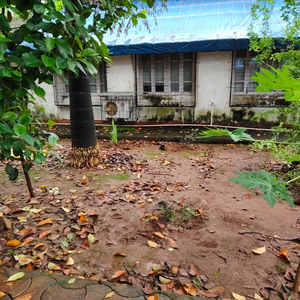
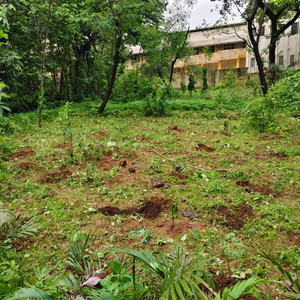
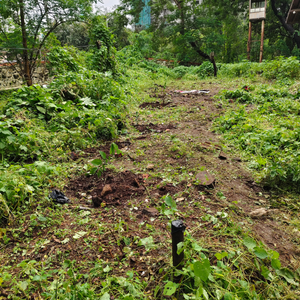
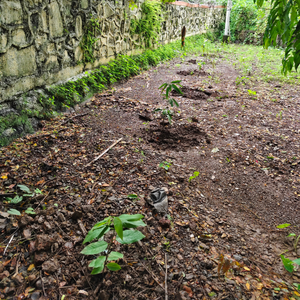
Project Update 1
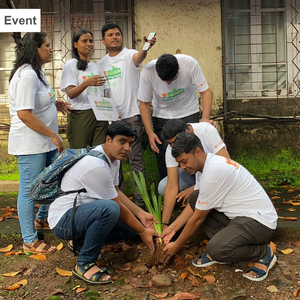



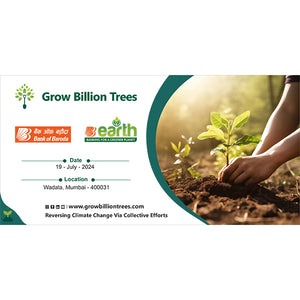

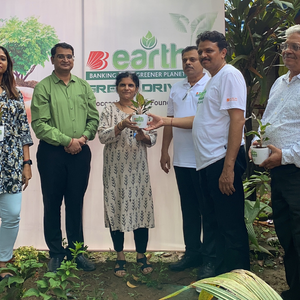
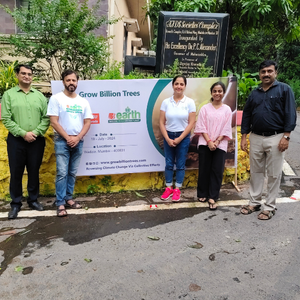
Digital Forest
Forest with 117 Trees planned
Want to plant your tree now?
Plant a Tree @ 299Trees Planted
Bank of Baroda’s MMCR Urban Forest Initiative: A Green Milestone for 117th Foundation Day
In celebration of its 117th Foundation Day, Bank of Baroda (BoB) embraced sustainability and environmental stewardship with a special tree plantation initiative under the urban forest concept. This initiative reflects the bank's commitment to promoting a greener and healthier environment, aligning with its core values of inclusivity and community welfare.
As part of the program, employees and stakeholders actively participated in planting a diverse range of indigenous trees. The urban forest concept emphasizes creating dense, self-sustaining green spaces that mimic natural ecosystems, enhancing biodiversity and improving air quality in urban areas. By engaging its workforce and local communities, Bank of Baroda reinforced its role as a responsible corporate citizen, contributing to the global movement against climate change.
This initiative not only commemorated the bank's rich history but also symbolized its forward-thinking approach to fostering a sustainable future. Through efforts like these, Bank of Baroda continues to innovate beyond financial services, nurturing a legacy of environmental and social impact for generations to come.
Tree Plantation Date
19th July 2024
Plantation Location
2V96+V4P, Acworth Complex, R.A. Kidwai Marg, Wadala West, Mumbai, Maharashtra 400031
Trees Planted
Total Count: 117 Trees
Species Name: Guava, Custard Apple, Lemon
Forest Type: Urban Forest
To commemorate its 117th Foundation Day, Bank of Baroda launched a transformative tree plantation initiative embracing the urban forest concept in the Mumbai Metropolitan and Coastal Region (MMCR). This endeavor aimed to create dense, sustainable green spaces that mimic natural ecosystems, contributing to biodiversity, improved air quality, and urban cooling. Employees and local communities actively participated in planting native tree species, symbolizing the bank's commitment to environmental sustainability and social responsibility. By integrating ecological mindfulness with its legacy of service, Bank of Baroda not only celebrated over a century of excellence but also reinforced its vision for a greener, healthier future.
Advantages Of Urban Forest
Enhanced Biodiversity
The initiative promotes the growth of native tree species, creating a habitat for various flora and fauna. This contributes to the restoration of ecological balance and encourages biodiversity in the urban landscape, enriching the environment for future generations.
Improved Air Quality
Urban forests act as natural air purifiers by absorbing pollutants and releasing oxygen. Bank of Baroda’s plantation drive significantly improves air quality in the Mumbai Metropolitan and Coastal Region (MMCR), benefiting residents and contributing to a healthier urban ecosystem.
Mitigation of Urban Heat Island Effect
Dense greenery from urban forests reduces temperatures in cities by providing shade and promoting evapotranspiration. This initiative helps cool the MMCR, making it more livable, especially in areas affected by rising urban heat.
Carbon Sequestration and Climate Change Mitigation
By planting a large number of trees, the initiative contributes to carbon sequestration, helping to offset carbon emissions and combat the adverse effects of climate change. This aligns with global efforts to achieve sustainability goals.
Community Engagement and Environmental Awareness
The active involvement of Bank of Baroda employees and local communities fosters environmental awareness and a sense of responsibility towards nature. It strengthens community bonds and inspires individuals to take part in more green initiatives.
Aesthetic and Psychological Benefits
Urban forests enhance the visual appeal of cityscapes, providing serene and green spaces amidst urban chaos. These spaces offer psychological benefits such as reduced stress and improved mental well-being, contributing to a higher quality of life for MMCR residents.
Water Management and Soil Preservation
The tree plantation improves water retention in the soil and reduces the risk of erosion. It also aids in recharging groundwater levels, ensuring better water management in urban areas prone to flooding or water scarcity.
Corporate Social Responsibility (CSR) Impact
Through this initiative, Bank of Baroda demonstrates its commitment to sustainability and corporate social responsibility. The plantation reflects the bank’s dedication to making a positive environmental impact while celebrating its legacy of service.
Symbol of Legacy and Future Sustainability
By linking this green initiative with its 117th Foundation Day, Bank of Baroda highlights its forward-thinking approach, combining a celebration of its rich history with a focus on a sustainable future for urban communities.
Activities During Plantation Drive
During Bank of Baroda's tree plantation initiative for its 117th Foundation Day, employees actively participated in creating a greener future by planting saplings and watering them at a site that was meticulously prepared beforehand. The groundwork included clearing the area, enriching the soil, and marking designated spots for planting to ensure optimal growth conditions for the trees. On the day of the event, employees came together in a collaborative effort, planting native tree species that align with the urban forest concept. The activity concluded with participants watering the newly planted saplings, symbolizing their commitment to nurturing these trees as a step toward environmental sustainability and a tribute to the bank's enduring legacy.
Tree Plantation Purpose
Bank of Baroda's Urban Forest initiative aims to mitigate carbon emissions, enhance urban environments, and foster sustainable urban ecosystems, aligning with several Sustainable Development Goals (SDGs) outlined by the United Nations:
1. SDG 1: No Poverty
Through long-term benefits such as better air quality, water management, and soil fertility, the plantation initiative supports agricultural sustainability in nearby areas, contributing to poverty alleviation and better livelihoods for rural communities.
2. SDG 3: Good Health and Well-being
The urban forest improves air quality by reducing pollution and releasing oxygen, contributing to better respiratory health and overall well-being for the community. Additionally, green spaces reduce stress and promote mental health, aligning with this goal.
3. SDG 4: Quality Education
The initiative serves as a platform for environmental awareness and education, encouraging employees and communities to learn about the importance of sustainability and ecological preservation.
4. SDG 6: Clean Water and Sanitation
Tree plantation aids in improving water quality by preventing soil erosion and recharging groundwater levels. Urban forests also help in maintaining the water cycle, ensuring clean and sustainable water sources for urban areas.
5. SDG 7: Affordable and Clean Energy
By reducing temperatures and improving microclimates in urban areas, urban forests can indirectly lower energy consumption for cooling, contributing to more efficient energy usage in cities.
6. SDG 8: Decent Work and Economic Growth
The initiative indirectly supports employment in green sectors such as landscaping, site preparation, and maintenance. By fostering environmental sustainability, it contributes to long-term economic growth without compromising natural resources.
7. SDG 9: Industry, Innovation, and Infrastructure
By integrating green infrastructure in urban areas, the plantation drive promotes innovative solutions for urban sustainability and supports resilient city planning.
8. SDG 11: Sustainable Cities and Communities
The initiative enhances urban sustainability by reducing the urban heat island effect, improving air quality, and creating green spaces for community interaction. It contributes to making cities like those in the Mumbai Metropolitan and Coastal Region (MMCR) more livable and resilient.
9. SDG 12: Responsible Consumption and Production
By utilizing eco-friendly practices in the preparation of the site and the choice of native tree species, the initiative promotes sustainable consumption of resources, ensuring minimal environmental impact and supporting circularity in urban development.
10. SDG 13: Climate Action
The urban forest sequesters carbon dioxide, mitigating the effects of climate change. The initiative demonstrates proactive steps toward reducing carbon footprints and combating global warming, showcasing Bank of Baroda’s commitment to climate action.
11. SDG 14: Life Below Water
The improved water management resulting from urban forests reduces runoff and pollution, indirectly benefiting aquatic ecosystems by preventing contamination of nearby water bodies.
12. SDG 15: Life on Land
The plantation supports biodiversity by creating habitats for local flora and fauna. It restores degraded land, enriches soil quality, and contributes to preserving ecosystems, aligning with the goal of protecting terrestrial life.
13. SDG 17: Partnerships for the Goals
Bank of Baroda's partnership with Grow Billion Trees has exemplified the essence of SDG 17: Partnerships for the Goals by fostering collaboration to drive large-scale environmental sustainability initiatives. This synergy has enabled the bank to leverage the expertise of Grow Billion Trees in urban forest development, ensuring scientifically planned, ecologically sustainable tree plantations. Together, they have created green spaces that enhance biodiversity, combat climate change, and contribute to community well-being. By combining resources, knowledge, and shared commitment, the partnership has amplified the impact of Bank of Baroda's tree plantation efforts, reinforcing the power of strategic alliances in achieving a greener and more sustainable future for all.
ESGs Achieved Through Urban Forest Plantation
Environmental Impact (E)
Bank of Baroda’s tree plantation initiative in the urban forest concept significantly contributes to environmental sustainability. By planting native tree species, the initiative enhances biodiversity, supports carbon sequestration, and improves air quality in the Mumbai Metropolitan and Coastal Region (MMCR). The trees act as natural filters, reducing pollution and mitigating the urban heat island effect, thereby fostering a healthier urban ecosystem. Additionally, the initiative aids in water retention, soil conservation, and groundwater recharge, addressing critical environmental challenges while aligning with the bank’s commitment to combating climate change.
Social Impact (S)
The initiative actively engages Bank of Baroda’s employees and local communities, fostering environmental awareness and a sense of responsibility. It creates opportunities for community bonding while promoting mental well-being through hands-on participation in greening efforts. The urban forest concept provides long-term social benefits by offering green spaces for recreation, reducing urban stress, and improving the overall quality of life for residents. Furthermore, the initiative showcases Bank of Baroda’s dedication to social responsibility, emphasizing its role in building sustainable and inclusive communities.
Governance Impact (G)
Through this initiative, Bank of Baroda demonstrates exemplary governance by integrating sustainability into its operational framework and decision-making processes. The bank collaborates with experts like Grow Billion Trees, ensuring that the project adheres to the highest environmental and ethical standards. This transparent and strategic approach to addressing environmental and social challenges reflects the bank’s commitment to responsible corporate governance. By aligning its initiatives with global sustainability goals, Bank of Baroda reinforces its reputation as a forward-thinking, ethical institution dedicated to long-term value creation for stakeholders.
Commitment by Grow Billion Trees
Grow Billion Trees is committed to driving sustainable plantation efforts, ensuring every initiative aligns with key environmental objectives and promotes long-term ecological balance. We focus on selecting native tree species that are well-adapted to local ecosystems, ensuring a higher survival rate and stronger environmental impact.
To maintain plant health and longevity, Grow Billion Trees emphasizes continuous maintenance and regular monitoring of the plantations. This approach helps ensure that each tree thrives, contributing effectively to both biodiversity and climate resilience.
Transparency is a core principle in our operations. Clients receive comprehensive reports, including geo-tagging of planted trees, survival rate updates, and ongoing progress reports. This level of openness allows clients to track the direct impact of their contributions, reinforcing trust and accountability.
Through our dedication to sustainable practices, Grow Billion Trees ensures that every plantation project leaves a lasting positive footprint on both the environment and the local communities it serves.
Summary
To celebrate its 117th Foundation Day, Bank of Baroda launched a significant tree plantation initiative embracing the urban forest concept. This effort focused on creating dense green spaces in the Mumbai Metropolitan and Coastal Region (MMCR) to enhance biodiversity, improve air quality, and mitigate the urban heat island effect. Employees actively participated by planting and watering saplings at a pre-prepared site, symbolizing the bank’s commitment to environmental sustainability and social responsibility. The initiative aligns with global goals, including climate action, sustainable cities, and partnerships for sustainability, reinforcing Bank of Baroda’s legacy of service and its vision for a greener future.
Trees for Corporates
Trending
Most Popular
1. Urban Forest Initiative by Bank of Baroda
1. Urban Forest Initiative by Bank of Baroda
Bank of Baroda’s Urban Forest initiative is more than just a green thumb’s dream – it’s a game-changer for sustainability in the heart of urban spaces. With a mission to counteract urbanization’s environmental toll, the bank’s urban forest projects in the MMCR (Mumbai Metropolitan and Coastal Region) create lush havens that promote biodiversity, mitigate pollution, and provide cool respite from the city heat. Think of it as a natural air purifier that works overtime! It’s a powerful symbol of Bank of Baroda’s dedication to not only financial growth but environmental prosperity, proving that a little green can go a long way in shaping a cleaner, healthier future. So, next time you pass by one of these urban forests, remember – it’s not just a tree; it’s a carbon-busting, habitat-building champion, courtesy of Bank of Baroda’s green initiatives.
Bank of Baroda’s Urban Forest initiative is more than just a green thumb’s dream – it’s a game-changer for sustainability in the heart of urban spaces. With a mission to counteract urbanization’s environmental toll, the bank’s urban forest projects in the MMCR (Mumbai Metropolitan and Coastal Region) create lush havens that promote biodiversity, mitigate pollution, and provide cool respite from the city heat. Think of it as a natural air purifier that works overtime! It’s a powerful symbol of Bank of Baroda’s dedication to not only financial growth but environmental prosperity, proving that a little green can go a long way in shaping a cleaner, healthier future. So, next time you pass by one of these urban forests, remember – it’s not just a tree; it’s a carbon-busting, habitat-building champion, courtesy of Bank of Baroda’s green initiatives.
2. Sustainable Urban Greening
2. Sustainable Urban Greening
Sustainable urban greening is all about transforming concrete jungles into thriving, eco-friendly environments. Bank of Baroda’s commitment to planting trees in the urban forest concept is a perfect example of this. By planting native species in urban spaces, the bank helps create green corridors that support local wildlife and reduce pollution. Trees in cities act as nature’s air filters and provide shade, cooling down the urban heat island effect. It’s like giving the city a much-needed green facelift, and who wouldn’t want that? With each sapling planted, Bank of Baroda isn’t just improving aesthetics; they’re nurturing the planet and providing a sustainable solution to environmental challenges. Sustainable urban greening is the future, and Bank of Baroda is leading the way with its leafy initiatives.
Sustainable urban greening is all about transforming concrete jungles into thriving, eco-friendly environments. Bank of Baroda’s commitment to planting trees in the urban forest concept is a perfect example of this. By planting native species in urban spaces, the bank helps create green corridors that support local wildlife and reduce pollution. Trees in cities act as nature’s air filters and provide shade, cooling down the urban heat island effect. It’s like giving the city a much-needed green facelift, and who wouldn’t want that? With each sapling planted, Bank of Baroda isn’t just improving aesthetics; they’re nurturing the planet and providing a sustainable solution to environmental challenges. Sustainable urban greening is the future, and Bank of Baroda is leading the way with its leafy initiatives.
3. Bank of Baroda CSR Activities
3. Bank of Baroda CSR Activities
Bank of Baroda’s corporate social responsibility (CSR) efforts go beyond just financial aid; they’re cultivating a legacy of green initiatives that nurture the environment. The bank’s tree plantation activities are a prime example of how a company can positively impact the planet. By focusing on sustainable projects like urban forests, Bank of Baroda has turned CSR into a tool for climate action, biodiversity, and pollution control. The bank’s employees, along with local communities, actively participate in these plantation drives, making it a collective effort to improve their surroundings. It's a perfect blend of corporate growth and environmental consciousness, and let’s be real – the planet could use more companies like Bank of Baroda who understand that growing trees is as important as growing profits.
Bank of Baroda’s corporate social responsibility (CSR) efforts go beyond just financial aid; they’re cultivating a legacy of green initiatives that nurture the environment. The bank’s tree plantation activities are a prime example of how a company can positively impact the planet. By focusing on sustainable projects like urban forests, Bank of Baroda has turned CSR into a tool for climate action, biodiversity, and pollution control. The bank’s employees, along with local communities, actively participate in these plantation drives, making it a collective effort to improve their surroundings. It's a perfect blend of corporate growth and environmental consciousness, and let’s be real – the planet could use more companies like Bank of Baroda who understand that growing trees is as important as growing profits.
4. Urban Green Spaces
4. Urban Green Spaces
Urban green spaces are like hidden gems in the concrete jungle, providing much-needed natural relief from the hustle and bustle of city life. Thanks to initiatives like Bank of Baroda’s tree plantation for its 117th Foundation Day, these green spaces are rapidly gaining ground in urban environments. The bank’s urban forest concept brings nature into the city, offering a tranquil escape for residents while helping the environment. Trees act as natural air purifiers, filter out pollutants, and even reduce noise pollution. They’re not just pretty to look at – urban green spaces make cities more livable and sustainable. With Bank of Baroda’s continued investment in these projects, the future is looking a lot greener and a lot more peaceful.
Urban green spaces are like hidden gems in the concrete jungle, providing much-needed natural relief from the hustle and bustle of city life. Thanks to initiatives like Bank of Baroda’s tree plantation for its 117th Foundation Day, these green spaces are rapidly gaining ground in urban environments. The bank’s urban forest concept brings nature into the city, offering a tranquil escape for residents while helping the environment. Trees act as natural air purifiers, filter out pollutants, and even reduce noise pollution. They’re not just pretty to look at – urban green spaces make cities more livable and sustainable. With Bank of Baroda’s continued investment in these projects, the future is looking a lot greener and a lot more peaceful.
5. Climate Action Through Tree Plantation
5. Climate Action Through Tree Plantation
When it comes to climate action, Bank of Baroda knows that every tree counts. The bank’s tree plantation initiatives under the urban forest concept are a direct response to the growing need for climate solutions. By planting trees in urban areas, Bank of Baroda is not only sequestering carbon but also cooling down cities affected by rising temperatures. The trees act as little climate warriors, absorbing carbon dioxide and producing oxygen, all while helping to reduce the urban heat island effect. Bank of Baroda is planting the seeds for a cooler, cleaner, and more sustainable future – one sapling at a time. So, while some people are busy worrying about the future of the planet, Bank of Baroda is out there making it greener and better.
When it comes to climate action, Bank of Baroda knows that every tree counts. The bank’s tree plantation initiatives under the urban forest concept are a direct response to the growing need for climate solutions. By planting trees in urban areas, Bank of Baroda is not only sequestering carbon but also cooling down cities affected by rising temperatures. The trees act as little climate warriors, absorbing carbon dioxide and producing oxygen, all while helping to reduce the urban heat island effect. Bank of Baroda is planting the seeds for a cooler, cleaner, and more sustainable future – one sapling at a time. So, while some people are busy worrying about the future of the planet, Bank of Baroda is out there making it greener and better.
6. Bank of Baroda Environmental Sustainability
6. Bank of Baroda Environmental Sustainability
Bank of Baroda’s environmental sustainability initiatives are a testament to the bank’s forward-thinking approach to banking and corporate responsibility. By integrating tree plantation into its urban forest projects, the bank has embraced a holistic approach to sustainability. The initiative not only supports the bank’s environmental goals but also creates long-lasting benefits for the communities it serves. From improving air quality to reducing the carbon footprint, Bank of Baroda’s environmental sustainability efforts provide a blueprint for other companies to follow. The trees planted as part of their urban forest projects are more than just greenery – they are an investment in a cleaner, more sustainable world. With Bank of Baroda leading the way, it’s clear that the future of finance and sustainability go hand in hand.
Bank of Baroda’s environmental sustainability initiatives are a testament to the bank’s forward-thinking approach to banking and corporate responsibility. By integrating tree plantation into its urban forest projects, the bank has embraced a holistic approach to sustainability. The initiative not only supports the bank’s environmental goals but also creates long-lasting benefits for the communities it serves. From improving air quality to reducing the carbon footprint, Bank of Baroda’s environmental sustainability efforts provide a blueprint for other companies to follow. The trees planted as part of their urban forest projects are more than just greenery – they are an investment in a cleaner, more sustainable world. With Bank of Baroda leading the way, it’s clear that the future of finance and sustainability go hand in hand.
7. Green Spaces in Urban Areas
7. Green Spaces in Urban Areas
Green spaces in urban areas are vital for the health and well-being of city dwellers, and Bank of Baroda is taking this responsibility seriously. Through its urban forest projects, the bank is enhancing the city’s green infrastructure, making it not only more beautiful but also more sustainable. These green spaces serve as natural lungs for the city, improving air quality, providing shade, and reducing the urban heat island effect. Plus, they offer spaces for residents to unwind and reconnect with nature – a rare commodity in bustling cities. Bank of Baroda’s green initiatives are transforming urban landscapes, proving that with the right investment, cities can be both urban and green.
Green spaces in urban areas are vital for the health and well-being of city dwellers, and Bank of Baroda is taking this responsibility seriously. Through its urban forest projects, the bank is enhancing the city’s green infrastructure, making it not only more beautiful but also more sustainable. These green spaces serve as natural lungs for the city, improving air quality, providing shade, and reducing the urban heat island effect. Plus, they offer spaces for residents to unwind and reconnect with nature – a rare commodity in bustling cities. Bank of Baroda’s green initiatives are transforming urban landscapes, proving that with the right investment, cities can be both urban and green.
8. Bank of Baroda’s Contribution to Urban Forestry
8. Bank of Baroda’s Contribution to Urban Forestry
Urban forestry is more than just a trend; it’s a vital part of creating sustainable cities, and Bank of Baroda is making a real impact in this field. The bank’s contribution to urban forestry through its tree plantation projects helps create resilient, eco-friendly cities that can withstand the challenges of climate change. By planting trees in urban areas, Bank of Baroda not only helps to improve air quality but also strengthens the urban ecosystem. These trees provide habitats for wildlife, reduce the carbon footprint, and even help mitigate flooding by improving water drainage. Bank of Baroda’s focus on urban forestry proves that with a little bit of green, we can build smarter, more sustainable cities for the future.
Urban forestry is more than just a trend; it’s a vital part of creating sustainable cities, and Bank of Baroda is making a real impact in this field. The bank’s contribution to urban forestry through its tree plantation projects helps create resilient, eco-friendly cities that can withstand the challenges of climate change. By planting trees in urban areas, Bank of Baroda not only helps to improve air quality but also strengthens the urban ecosystem. These trees provide habitats for wildlife, reduce the carbon footprint, and even help mitigate flooding by improving water drainage. Bank of Baroda’s focus on urban forestry proves that with a little bit of green, we can build smarter, more sustainable cities for the future.
FAQ
What is the urban forest initiative by Bank of Baroda?
The urban forest initiative by Bank of Baroda is aimed at creating green spaces in urban areas to improve the environment and quality of life. Through this initiative, the bank plants trees in cities, focusing on enhancing biodiversity, reducing pollution, and mitigating the urban heat island effect. This effort contributes to cleaner air, better water retention, and supports the well-being of urban communities. By fostering these urban forests, Bank of Baroda is helping to create sustainable, eco-friendly environments for residents and future generations.
What is the significance of tree plantation for Bank of Baroda’s 117th Foundation Day?
For its 117th Foundation Day, Bank of Baroda launched a tree plantation drive to strengthen its commitment to sustainability. The initiative is part of the bank’s broader efforts to support environmental conservation through the creation of urban forests. Planting trees helps improve air quality, reduces pollution, and contributes to overall environmental well-being. This celebration demonstrates Bank of Baroda’s dedication to corporate social responsibility and environmental sustainability, making it a key milestone in the bank’s journey towards a greener future.
How do urban forests help improve cities?
Urban forests play a vital role in improving cities by enhancing the environment and quality of life for residents. Trees absorb pollutants, reduce noise, provide shade, and help combat the urban heat island effect. They also increase biodiversity by providing habitats for wildlife and improve the aesthetic value of urban spaces. Through its urban forest initiatives, Bank of Baroda is contributing to creating green, livable cities that promote better health, comfort, and well-being for all citizens.
What are the environmental benefits of Bank of Baroda’s tree plantation initiative?
Bank of Baroda’s tree plantation initiative helps improve the environment by reducing carbon emissions, increasing oxygen levels, and supporting biodiversity. The planted trees help combat climate change by absorbing carbon dioxide and providing essential habitat for various species. In urban settings, the trees mitigate pollution, reduce the urban heat island effect, and improve the overall air quality. This initiative is a vital step in promoting long-term environmental sustainability and fostering eco-friendly urban spaces for future generations.
How can I participate in Bank of Baroda’s tree plantation initiative?
Bank of Baroda encourages its employees and local communities to participate in its tree plantation initiatives. The bank organizes events and drives where individuals can volunteer to plant trees in designated areas. Participation can involve activities such as planting saplings, watering trees, and maintaining green spaces. By joining these initiatives, you can help contribute to building greener and more sustainable urban environments. Stay updated through Bank of Baroda’s communications and social media platforms for opportunities to get involved.
What is Bank of Baroda’s approach to corporate social responsibility (CSR)?
Bank of Baroda’s CSR approach revolves around making a positive impact on the environment and society. The bank’s tree plantation projects are part of its commitment to sustainable development. Bank of Baroda strives to contribute to social well-being through initiatives that focus on environmental conservation, education, healthcare, and community development. By promoting tree plantation and urban forest creation, the bank demonstrates its dedication to responsible business practices that benefit both the planet and local communities.
How does tree plantation contribute to climate action?
Tree plantation contributes significantly to climate action by absorbing carbon dioxide and other harmful greenhouse gases from the atmosphere. Trees act as carbon sinks, helping reduce the overall carbon footprint and mitigating the impact of climate change. Bank of Baroda’s tree plantation initiatives are aligned with global climate action goals, as they directly contribute to carbon sequestration and environmental sustainability. By planting trees, Bank of Baroda helps in the fight against climate change and works towards building a greener, more sustainable future.
What kind of trees are planted during Bank of Baroda’s urban forest initiatives?
Bank of Baroda focuses on planting native and indigenous tree species during its urban forest initiatives. These trees are well-suited to the local environment and provide numerous ecological benefits. Native species support local biodiversity by providing habitats for wildlife and help maintain the balance of the ecosystem. Bank of Baroda ensures that the trees planted are sustainable and can thrive in urban conditions, contributing to long-term environmental improvements in cities.
How do urban forests help in combating air pollution?
Urban forests are natural air filters that help combat air pollution by absorbing pollutants such as carbon dioxide, sulfur dioxide, and nitrogen oxides. Trees and plants release oxygen and help cleanse the air, improving air quality for urban residents. Bank of Baroda’s urban forest initiatives contribute to reducing the effects of air pollution by increasing the number of trees in cities. This green infrastructure plays a crucial role in enhancing the livability of urban areas and promoting healthier communities.
How can Bank of Baroda’s tree plantation initiatives help future generations?
Bank of Baroda’s tree plantation initiatives are designed to create lasting, positive impacts on the environment and future generations. By planting trees, the bank is contributing to the long-term health of the planet, improving air quality, supporting biodiversity, and combating climate change. These urban forests will provide future generations with cleaner, greener cities to live in, promoting a better quality of life and a more sustainable future. Bank of Baroda is planting the seeds for a healthier planet, one sapling at a time.
- Choosing a selection results in a full page refresh.
- Opens in a new window.



